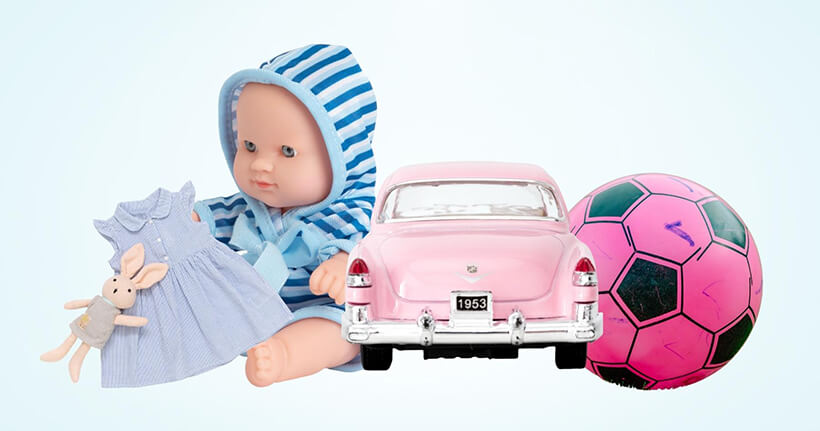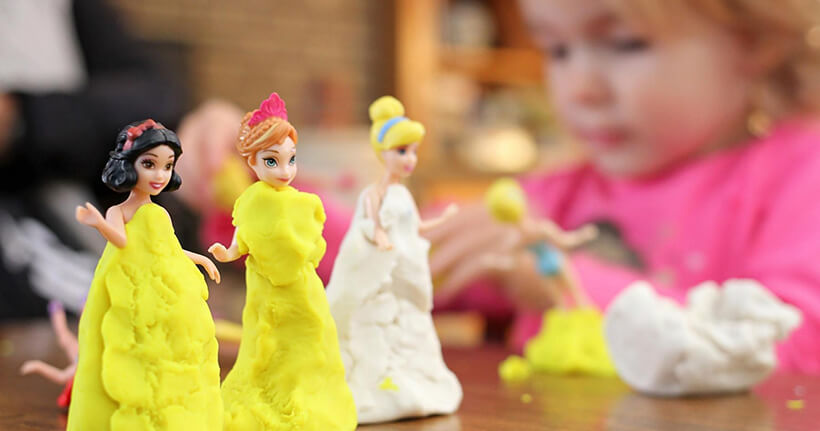In our settings, we celebrate differences and teach our children that being unique and individual are positive, and welcomed, traits. But when difference leads to discrimination and limits potential opportunities, it must be addressed. Blossom Educational spoke to Kenny Spence, who is a childcare expert running a successful Early Years Centre in Edinburgh and a passionate advocate for men in childcare.
Sexism in the EY: Meet the expert
Kenny co-founded the established charities: Men in Childcare and The Lone Father Project, both of which have been running for over 20 years. He shares his thoughts on how gender stereotyping contributes to the early years’ recruitment crisis and how to achieve an effective play environment free from gender bias.
What is gender stereotyping in the Early Years?
Gender stereotyping in the Early Years is a complex issue. We focus on two critical areas in this article: the practices and opinions that prevent male recruitment, and the everyday practices that unintentionally affirm gender stereotyping behaviours. Gender stereotyping is an outdated ‘traditional’ view of what boys and girls are expected to look like, play with, and have interests in. To give a common example, girls play in the role-play house whilst boys are active and boisterous outdoors. It is the cause of discriminatory thoughts and actions.
Why does gender equality matter in the nursery?
Children learn about the world around them primarily through visual and concrete interaction. Studies show that there are worldwide culturally defined ‘male’ and ‘female’ personality traits. These traits are subconsciously imposed on young children, altering their interaction methods.
Findings report that women highlighted themselves and other women as more caring, sensitive and agreeable, whereas men were noted to be assertive, decisive and problem-solvers. Kenny explains that these gender-specific traits can be partially responsible for the lack of men in childcare, as men may be wary of entering into a career deemed for ‘women only’.
Why are there less men in childcare?
Simply put, Kenny explains that increasing the number of men in childcare is not a government focus. There are focuses nationwide to increase the number of women in STEM, beginning with increasing the number of female Maths and Science teachers. This level of importance is not prevalent in the Early Years.
Recruitment in nurseries is at a crisis point; with more childcare spaces being made available to encourage parents back to work, the staff needed to cover these additional spaces are not a priority. Due to the societal gender role of women to be caring and nurturing, the roles available within nursery settings are often thought to be for women only.
How can more men be encouraged to get into childcare?
The recruitment of more men into childcare goes hand-in-hand with the current recruitment and retention challenges. There are various organisations and avenues to explore that work to encourage more men to join the Early Years. Kenny co-founded the charity Men in Childcare in 2000 with the sole drive to encourage men into training routes to help them thrive in the nursery. Since 2000, the charity has helped thousands of men explore various courses in childcare, supporting them with training and studying.
How does gender inequality impact daily practice in the Early Years?
Gender inequality and stereotyping can impact daily life in the early years. Something so simple as unconscious language choices can contribute to gender-affirming personality traits or actions.
Gender-stereotyped toys
Play is the primary vehicle for learning in nursery; children develop holistically through loose and free-play opportunities. Toys can shape the type of play children engage with. You can find out more about types of play here. Typically, male-focused toys involve puzzles, robots, cars and toys that facilitate ‘fighting’ games such as weapons. At the same time, girls’ toys are often dolls, cuddly toys, and real-life imitations (plastic food).
The BBC ran an interesting experiment on gender stereotyping with children’s toys to see if the visual appearance of a boy or girl would change the adult’s subconscious choice for toys with which to encourage the child to play. They found that even those who didn’t feel they adopted a gender stereotype bias instinctively encouraged those in pink clothes to play with teddies and those in blue to play with trucks and robots. It can be a valuable practice to regularly audit the toys you have in your setting to ensure a balance of stereotypical masculine and feminine toys are available for all children.

Gender-typed language used in nurseries
The clothing our children wear in nurseries, from their daily outfits to dressing-up items from role-play areas, is strongly gender-typed. Large clothing sellers have pink for girls and blue for boys, even though historically blue was linked with girls for biblical reasons and pink for boys with connotations of red for strength.
Dr Karen Joyce explains in her article that there is no gender-specific science behind children’s clothing. Children’s feet do not differ in shape to allow boys to wear socks with dinosaurs and girls unable to; it is societal pressure. In nursery settings, you cannot influence what clothing your families choose for their children, but your language to describe their clothes can be thoughtful. Refrain from describing items as pretty, handsome, or any appearance-focused descriptions for clothing.
Language used
Language is used to encourage, celebrate and support our children, but it can spread messages that worth stems from gender-affixed behaviours. Description of boys being brave and strong, as well as girls being helpful and conscientious, can unintentionally pigeonhole behaviours. These seemingly harmless comments can be the soundtrack to sexism, contributing to the drip-drip impact of gender messaging.
How do you encourage gender equality in the nursery?
Kenny warns of being too focused on creating a gender-aware nursery setting, ‘If we are manipulating their behaviour choices in any way- it is with bias. The best thing to encourage gender-free play is availability’. One thing you can do in your setting is to have a selection of exciting toys and loose parts to play with, as well as sensory activities made readily available for practitioners.
Additionally, Kenny recommends never second-guessing a child’s choice of dress-up or play; if a boy wants help to put the dress on, then help him without question. It is as simple as to be open and encouraging with all of our children. This can be supported through your nursery’s policies and procedures with inclusion.
Share with the parents from the beginning your stance to encourage gender-free play. Encouraging mentally healthy habits from an early age is essential; supporting proactively is always better than a reactive response.
Celebrate job roles that break stereotypes
Engage your families and their loved ones in celebrating those who have a profession that breaks societal stereotypes: male dancers, male nurses or teachers, full-time fathers, female tradespeople, surgeons, and firefighters. Give your children opportunities to experience a wide range of people who represent their chosen profession.
Film choices that break gender stereotypes
Think of traditional Disney films that children may be familiar with: Snow White, Rapunzel, Cinderella, and The Little Mermaid. They all have female leads which require rescuing, with pretty, elegant gowns to fit the expected princess role. Steps have been taken to introduce modern films with more ethnic diversity and a strong female lead who doesn’t centre around the theme of romance: Moana, Brave, and Encanto are all modern examples of princesses breaking the mould.

Non-traditional tales for EY settings
Storytime is a time for exploring new worlds, beginning adventures and sparking imagination. Ensure the stories you read offer a variety of main characters and personalities. Audit your reading choices to allow all boys not to be naughty and boisterous (Horrid Henry) and for girls to take strong leadership roles. We have added a list of non-traditional stories to share with your children to celebrate the diversity of colour and personality.
- It’s Okay To Be Different by Todd Parr
- My Princess Boy by Cheryl Kilodavis
- A Fire Engine For Ruthie by Lesléa Newman
- Stories For Kids Who Dare To Be Different by Ben Brooks
- Dogs Don’t Do Ballet by Anna Kemp and Sara Ogilvie
- The Paper Bag Princess by Robert Munsch and Michael Martchenko
- The Night Pirates by Peter Harris and Deborah Allwright
- Princess Daisy and the Dragon and the Nincompoop Knights by Steve Lenton
Consistency is key when having a nursery-wide stance on snuffing out outdated gender stereotypes. Build this discussion into your next staff meeting and share this article with your team.
Subscribe to receive expert advice and tips from seasoned professionals in the early years sector.